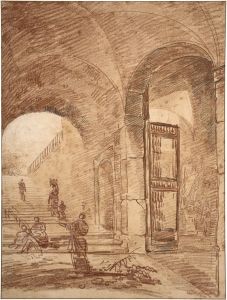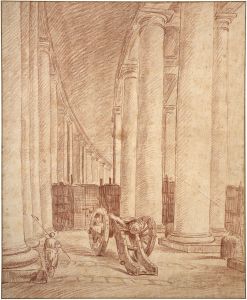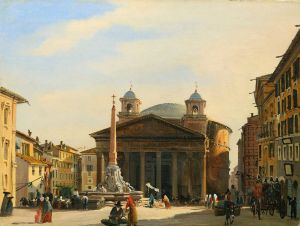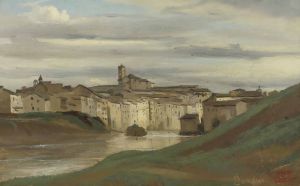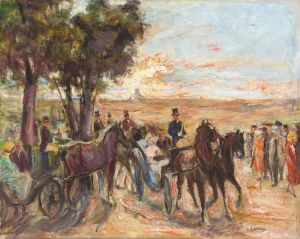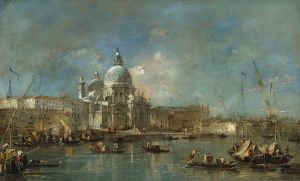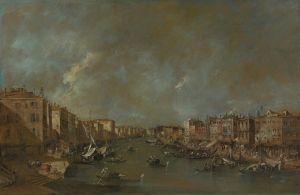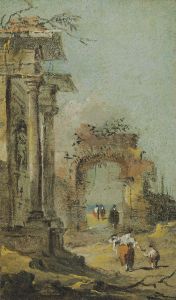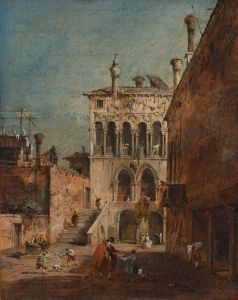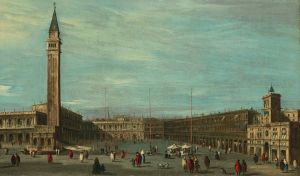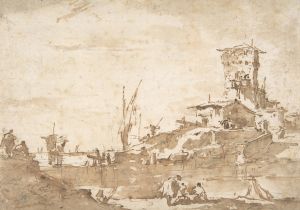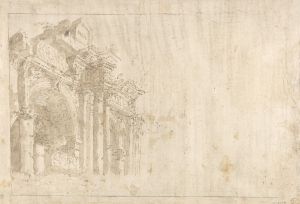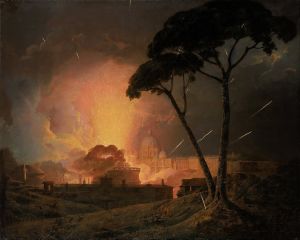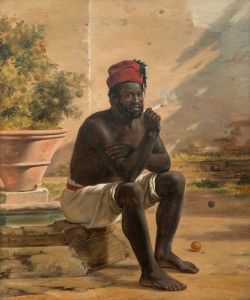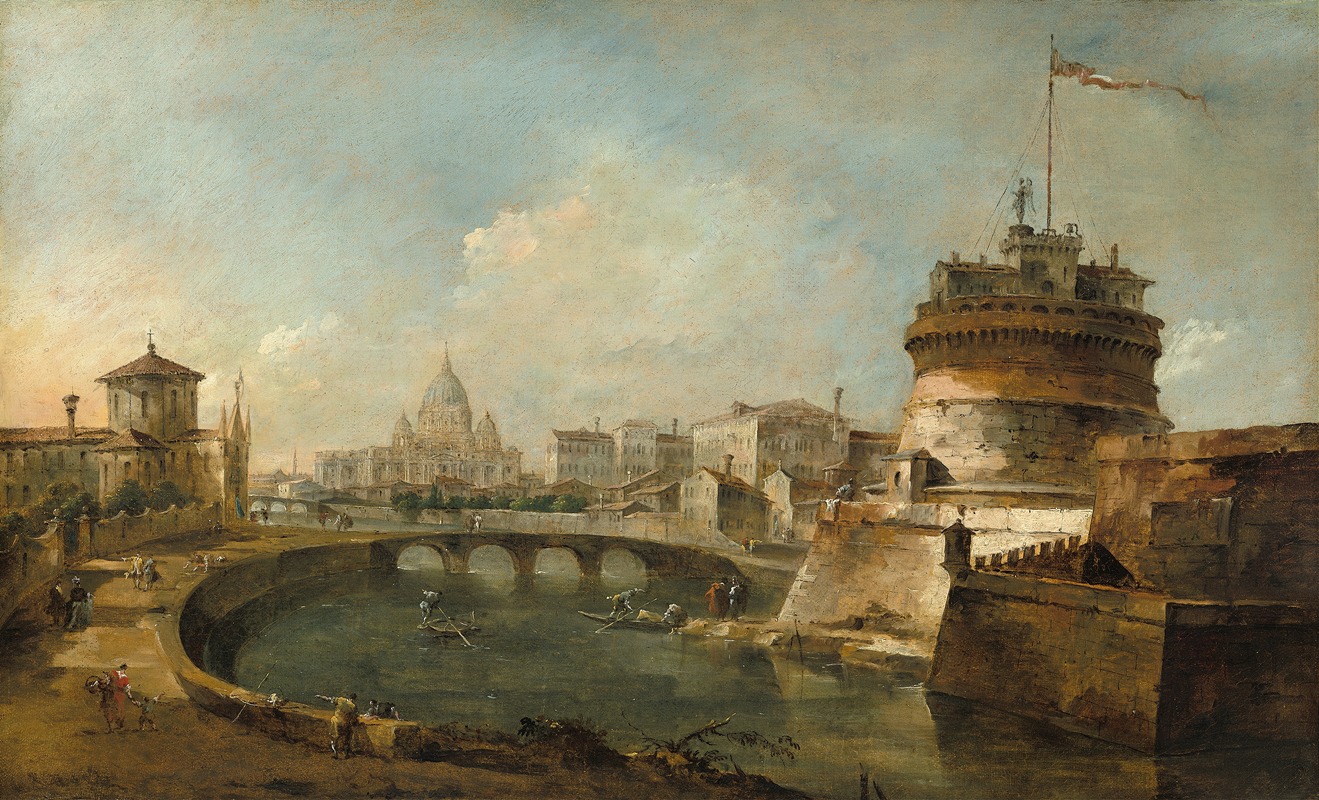
Fanciful View of the Castel Sant’Angelo,Rome
A hand-painted replica of Francesco Guardi’s masterpiece Fanciful View of the Castel Sant’Angelo,Rome, meticulously crafted by professional artists to capture the true essence of the original. Each piece is created with museum-quality canvas and rare mineral pigments, carefully painted by experienced artists with delicate brushstrokes and rich, layered colors to perfectly recreate the texture of the original artwork. Unlike machine-printed reproductions, this hand-painted version brings the painting to life, infused with the artist’s emotions and skill in every stroke. Whether for personal collection or home decoration, it instantly elevates the artistic atmosphere of any space.
Francesco Guardi's Fanciful View of the Castel Sant’Angelo, Rome is a painting attributed to the Venetian artist Francesco Guardi (1712–1793), one of the prominent figures of the Venetian school of painting during the 18th century. Guardi is best known for his vedute (view paintings) and capricci (imaginary landscapes), which often combined real architectural elements with fantastical or imaginative details. This particular work reflects his skill in blending reality and invention, a hallmark of his artistic style.
The painting depicts the Castel Sant’Angelo, a historic fortress in Rome, originally built as a mausoleum for the Roman Emperor Hadrian in the 2nd century AD. Over the centuries, the structure underwent numerous transformations, serving as a papal fortress, a prison, and now a museum. In Guardi's rendition, the Castel Sant’Angelo is presented in a manner that is not strictly topographical but rather imaginative, aligning with the tradition of capriccio. The composition likely incorporates elements of fantasy, as Guardi often took liberties with architectural accuracy to create visually engaging and atmospheric scenes.
Guardi's technique in this painting demonstrates his characteristic loose brushwork and attention to light and atmosphere. His use of color and texture captures the interplay of light on the building's surface and the surrounding environment, evoking a sense of romanticism and nostalgia. The painting is an example of Guardi's later work, where his style became increasingly expressive and less focused on precise detail, setting him apart from his contemporary Canaletto, who was known for his meticulous and highly detailed views.
While Guardi spent most of his life in Venice and is primarily associated with Venetian subjects, his interest in Roman landmarks, as seen in this painting, reflects the broader European fascination with classical antiquity during the 18th century. This interest was fueled by the Grand Tour, a cultural journey undertaken by wealthy Europeans to explore the art and architecture of Italy. Paintings like Fanciful View of the Castel Sant’Angelo, Rome catered to this demand for images of iconic Italian landmarks, whether rendered accurately or imaginatively.
The exact date of the painting is not definitively known, but it is generally attributed to Guardi's mature period, when his style had fully developed its distinctive qualities. The work is now housed in a private or public collection, though specific details about its current location and provenance are not widely documented.
As with many of Guardi's works, Fanciful View of the Castel Sant’Angelo, Rome exemplifies his ability to merge reality and imagination, creating a poetic vision of a historic site that continues to captivate viewers.





